
Nothing Phone (2a) Plus review - The stylish smartphone with an exclusive processor that doesn't cost a lot
Where buyers get more phone than expected.
The Phone 2a Plus uses the basis of Nothing's most popular smartphone and, according to the manufacturer, has been improved in three key areas. Read our review of the Nothing Phone (2a)'s sister model to find out what these are and what surprises the inexpensive Nothing phone has in store.Marcus Herbrich, 👁 Daniel Schmidt (translated by Daisy Dickson) Published 🇩🇪 🇫🇷 ...
The most-sold phone from Nothing (according to the manufacturer) has been given a successor, namely a Plus model. The Nothing Phone (2a) Plus is a slightly reworked version of the Nothing Phone (2a). Nothing promises improvements in three key areas: performance, camera and design. In the United States, the phone retails for US$449.99, meaning it is a whopping 100 dollars more expensive than the 2a model, as a 128-GB version is (likely) not offered anymore.
The Plus model is powered by a worldwide exclusive processor, the Dimensity 7350 Pro 5G. The new MediaTek SoC, which is manufactured using the 4-nm process, is supposedly 10 per cent faster than the Dimensity 7200 inside the sister model. In this review, you'll be able to find out whether Nothing can close the gap to its Galaxy and Poco competitors when it comes to the inexpensive mid-range segment.
Possible competitors compared
Rating | Version | Date | Model | Weight | Drive | Size | Resolution | Price |
|---|---|---|---|---|---|---|---|---|
| 79.9 % | v8 | 09 / 2024 | Nothing Phone (2a) Plus Dimensity 7350 Pro, Mali-G610 MP4 | 190 g | 256 GB UFS 3.1 Flash | 6.70" | 2400x1080 | |
| 77.3 % | v8 | 08 / 2024 | Sony Xperia 10 VI SD 6 Gen 1, Adreno 710 | 164 g | 128 GB UFS 2.2 Flash | 6.10" | 2520x1080 | |
| 75.4 % | v8 | 07 / 2024 | Motorola Edge 50 Fusion SD 7s Gen 2, Adreno 710 | 175 g | 256 GB UFS 2.2 Flash | 6.70" | 2400x1080 | |
| 86.1 % v7 (old) | v7 (old) | 03 / 2024 | Xiaomi Poco X6 Pro 5G Dimensity 8300-Ultra, Mali-G615 MP6 | 186 g | 512 GB UFS 4.0 Flash | 6.67" | 2712x1220 | |
| 85.9 % v7 (old) | v7 (old) | 05 / 2024 | Samsung Galaxy A35 5G Exynos 1380, Mali-G68 MP5 | 209 g | 128 GB UFS 2.2 Flash | 6.60" | 2340x1080 | |
| 86.9 % v7 (old) | v7 (old) | 04 / 2024 | Nothing Phone (2a) Dimensity 7200, Mali-G610 MP4 | 190 g | 256 GB UFS 3.1 Flash | 6.70" | 2412x1084 |
Please note: We have updated our rating system and the results of version 8 are not comparable with the results of version 7. More information is available here.
Case - The Nothing Phone (2a) Plus with an IP rating
Visually, the Phone (2a) Plus' design looks great, including the front which uses Gorilla Glass 5. The 2-millimeter bezels around the 6.7-inch OLED panel are nice and slim. The manufacturer states that these are the smallest bezels of all of Nothing's smartphone portfolio. As a result, the size ratio between its screen and the front of the device is 87 per cent, which is really good for a mid-range phone.
There are two new colors of the Phone (2a) Plus: Metallic Gray and Metallic Black. Aside from this, not much has been changed in comparison to its sister model, but this doesn't necessarily have to be a bad thing. This is because its back with all of its showcased inner workings, such as its NFC coil, makes for a truly extravagant appearance. The high-gloss finish does make fingerprints visible, but this isn't a real problem thanks to the back being transparent. The IP54-certified case is otherwise well-made. However, certain compromises have to be made in terms of the phone's feel due to how much plastic has been used.
The well-known Glyph lights consisting of LED strips are a must for a Nothing Phone. In contrast to the Nothing Phone (2), however, only three LED elements have been installed, and the Plus model has not been improved in this aspect either.
Connectivity - The Nothing smartphone with NFC
The mid-range smartphone produced by Nothing supports Bluetooth 5.3, has an NFC chip as well as a notification LED in the shape of the Glyph lights. The Glyph user interface allows lots of customizations to be made, including setting a timer and integrating third-party apps. Nothing has installed 12 GB of RAM and 256 GB of UFS flash storage—it has not been confirmed whether a version with 8 GB and 128 GB will follow later, as with the normal Phone (2a). If you need more space, you can transfer files to an external storage medium, such as memory sticks, using USB-OTG; it is not possible to expand the storage via a microSD card.
As is expected for the price range, the USB-C port only features a 2.0 specification, which means that wired image output is not possible. Nevertheless, you can still wirelessly transmit display content to external monitors via Miracast, and video content from streaming services can be viewed in HD quality thanks to Widevine L1.
In our copying test with a connected Samsung 980 Pro (M2.SSD hard disk), the USB port's transfer speed was pretty slow at 37 MB/s. The connected storage media can be formatted with FAT, FAT32 or exFAT. The Nothing phone also supports both reading and writing data carriers for NTFS.
Software - The mid-range phone with Android 14
The Phone (2a) Plus' user interface is Nothing OS 2.6, which is based on the latest Android 14. Its striking design with the black and white pixel look can be changed to the "classic" Android look during setup.
With OS 2.6, the library has been expanded to include functional widgets for the home screen and lock screen. "Smart Clean", which regularly deletes unused system files, and NTFS optimization are also on board.
Sustainability
Nothing offers three years of software updates and four years of security updates for its Plus model. That's not bad for the mid-range, but Samsung does it better with its A-series, guaranteeing five years of updates.
A CO2 footprint of 53.34 kg CO²e is stated for the Phone (2a) Plus, which is comparatively low. The use of recycled materials also contributes to the manufacturer's sustainability concept. The Plus model is made from recycled metals such as aluminum, steel and tin, and over 50 per cent of the plastic parts come from sustainable production, according to the manufacturer. The packaging is made from recycled paper material and no plastic film is used.
Communication and GNSS - The Nothing phone surprises again
On paper, the Nothing phone only supports WiFi 6, but surprisingly, its WLAN module also worked with the 6 GHz band during our test, which would suggest it supports WiFi 6E. It doesn't make much sense as to why Nothing wouldn't want to officially list this purchase argument, as the Mediathek SoCs also support this feature. Nevertheless, buyers are still offered more than the datasheet suggests. But even in the 5 GHz range, its transfer rates with our reference router Asus ROG Rapture GT-AXE11000 were significantly higher and more constant than with the Phone (2a)—at least when transmitting.
The mid-range Nothing phone supports 5G in combination with a wide variety of frequencies. Its frequency setup in the 4G network is also very good with 17 bands being supported, and all frequencies relevant to German-speaking countries are available (where this test was carried out). The Phone (2a) Plus is also well equipped for use further afield, although there are still some gaps in its frequency coverage compared to flagship smartphones.
| Networking | |
| Nothing Phone (2a) Plus | |
| iperf3 receive AXE11000 | |
| iperf3 transmit AXE11000 | |
| iperf3 transmit AXE11000 6GHz | |
| iperf3 receive AXE11000 6GHz | |
| Sony Xperia 10 VI | |
| iperf3 receive AXE11000 | |
| iperf3 transmit AXE11000 | |
| Motorola Edge 50 Fusion | |
| iperf3 receive AXE11000 | |
| iperf3 transmit AXE11000 | |
| Xiaomi Poco X6 Pro 5G | |
| iperf3 receive AXE11000 | |
| iperf3 transmit AXE11000 | |
| Samsung Galaxy A35 5G | |
| iperf3 receive AXE11000 | |
| iperf3 transmit AXE11000 | |
| Nothing Phone (2a) | |
| iperf3 receive AXE11000 | |
| iperf3 transmit AXE11000 | |
| iperf3 transmit AXE11000 6GHz | |
| iperf3 receive AXE11000 6GHz | |
| Average of class Smartphone | |
| iperf3 receive AXE11000 | |
| iperf3 transmit AXE11000 | |
| iperf3 transmit AXE11000 6GHz | |
| iperf3 receive AXE11000 6GHz | |
In order to assess its locating accuracy in practice, we took our Phone (2a) Plus on a short bike ride and recorded our route with a Garmin Venu 2 for comparison purposes. We like its locating capabilities, as deviations from the selected routes were only visible in a few places when taking a look at the detailed view of the GNSS recording.
Single-band connectivity is provided for most global satellite networks. In our test, the mid-range phone used GPS, GLONASS, BeiDou and Galileo to determine its position. Although satellite locating takes a little longer indoors than outdoors, it is similarly accurate.
Telephone features and call quality - The mid-range phone without eSIM support
The Phone (2a) Plus offers fully-fledged dual SIM support with two nano-SIM card slots, but the option of integrating an eSIM into the system is still not available inside the Nothing mid-range. Calls can be made via Wi-Fi or the LTE network.
The two built-in microphones enable a good sound experience during calls, although the Phone (2a) Plus transmits voices somewhat quietly.
Cameras - The Nothing Phone (2a) Plus with 50 MPix
The camera on the front of the Nothing phone has been slightly upgraded compared to the 2a model with the help of a 50 MPix sensor in a 1/2.76-inch format. As a result, Nothing now allows its mid-range phone to take HDR photos and videos in 4K30 with all camera sensors as well as directly outputting 50-MPix photos. The latter in particular is hard to find in the mid-range segment. The front camera, which works with a fixed focus, delivers good selfies with balanced exposure and decent sharpness in daylight.
The rear cameras have been carried over from its sister model, meaning that the Phone (2a) Plus has a 50 MPix main camera with an aperture of 1.88 and another 50 MPix camera for ultra-wide-angle photos.
In terms of photo quality, the main camera delivers a generally good result for a mid-range phone. The dynamics look great and the photos are given a lot of light—sometimes maybe a little too much even. Aside from its lighting issues, green tones could do with looking a bit more subtle. Still, the sharpness level in the shots is perfectly fine.
The Phone (2a) Plus doesn't offer a lossless zoom, meaning it only enlarges digitally. At 2x zoom, the results look pretty good—it likely uses a sensor crop, which has a positive effect in bright light. However, if you want to zoom in even closer to your subject, you'll have to deal with a quick decline in quality, resulting in barely any details being visible at 5x zoom.
The ultra-wide-angle camera also delivers an image quality that is solid at best for this price range, with numerous image errors showing up in the photos. Nevertheless, the third lens in the group still delivers useful results for social media.
Image comparison
Choose a scene and navigate within the first image. One click changes the position on touchscreens. One click on the zoomed-in image opens the original in a new window. The first image shows the scaled photograph of the test device.
Wide-angleWide-angleLow lightUltra-wide angleZoom 5xUnder controlled lighting conditions, we analyzed the main camera's color reproduction in comparison to the actual reference colors. In addition to the brightening that often occurs with smartphones, the Phone (2a) Plus frequently got the colors significantly wrong. Larger deviations in the ColorChecker passport occurred especially with green and yellow tones.

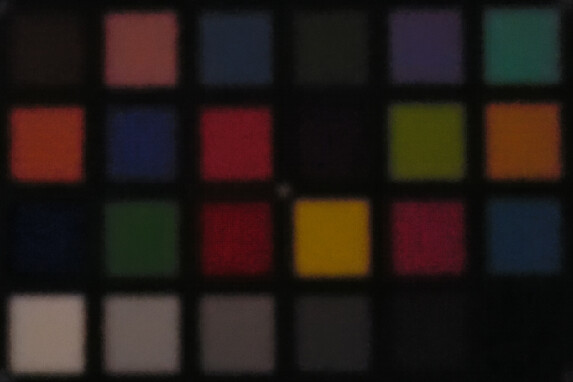
Accessories and warranty - The Nothing phone comes without a power supply
The Phone (2a) Plus comes delivered with a nice USB-C cable (Type-C to Type-C), a SIM tool as well as information leaflets. Furthermore, the phone comes with a screen protector installed ex works. You can optionally purchase a 45-watt power supply via the manufacturer, and the same can be said for a matching protective case.
In the United States, the Nothing phone is covered by a standard 12-month warranty.
Input devices & operation - The Nothing Phone (2a) Plus relies on an optical sensor
Inputs on the 6.7-inch OLED display are accurately recognized right into the corners of the touchscreen. Thanks to its sampling rate of up to 240 Hz, the panel responds quickly to touches and because of its high refresh rate of 120 Hz at most, the Phone (2a) Plus largely runs very smoothly and animations look fluid.
The installed linear vibration motor (X-axis) is a real highlight for this price range. The Phone (2a) Plus provides nice haptic and precise feedback during everyday use. The optical fingerprint sensor, which reliably unlocks the screen, works quickly—but Nothing could improve on its positioning. For our taste, the sensor has been placed very far down. There is also less secure 2D face recognition, which is based on a FaceUnlock function using the front camera.
Display - The mid-range phone with OLED

The 120 Hz AMOLED display has a rather unusual resolution of 2,412 x 1,084 and a high pixel density of around 400 PPI. Nothing advertises its refresh rate as "adaptive", but an LTPO panel hasn't been installed. The Phone (2a) Plus only supports an automatic mode with a gradation of 30 Hz and a minimum frequency of 60 Hz read out by the system.
Its maximum brightness when depicting a completely white display and with the ambient light sensor activated is 1,061 cd/m²—the display doesn't get any brighter than this, even with an even distribution of light and dark areas (APL18). At 1,011 cd/m², the Nothing Phone fell slightly short of our expectations during the test. We didn't manage to achieve the advertised peak brightness of 1,300 nits even when playing our 4K video material. Playing HDR content nevertheless works perfectly with the brightness offered by the phone. HLG, HDR10+ and HDR10 are supported as standards.
| |||||||||||||||||||||||||
Brightness Distribution: 96 %
Center on Battery: 1034 cd/m²
Contrast: ∞:1 (Black: 0 cd/m²)
ΔE ColorChecker Calman: 1.8 | ∀{0.5-29.43 Ø4.78}
ΔE Greyscale Calman: 2 | ∀{0.09-98 Ø5}
99.1% sRGB (Calman 2D)
Gamma: 2.23
CCT: 6803 K
| Nothing Phone (2a) Plus AMOLED, 2400x1080, 6.7" | Sony Xperia 10 VI OLED, 2520x1080, 6.1" | Motorola Edge 50 Fusion P-OLED, 2400x1080, 6.7" | Xiaomi Poco X6 Pro 5G AMOLED, 2712x1220, 6.7" | Samsung Galaxy A35 5G Super AMOLED, 2340x1080, 6.6" | Nothing Phone (2a) AMOLED, 2412x1084, 6.7" | |
|---|---|---|---|---|---|---|
| Screen | 20% | 23% | 20% | -4% | 15% | |
| Brightness middle (cd/m²) | 1034 | 1010 -2% | 1213 17% | 1034 0% | 904 -13% | 1033 0% |
| Brightness (cd/m²) | 1038 | 1012 -3% | 1190 15% | 1035 0% | 912 -12% | 1042 0% |
| Brightness Distribution (%) | 96 | 97 1% | 93 -3% | 96 0% | 97 1% | 96 0% |
| Black Level * (cd/m²) | ||||||
| Colorchecker dE 2000 * | 1.8 | 1 44% | 1.36 24% | 1.1 39% | 2.1 -17% | 1.6 11% |
| Colorchecker dE 2000 max. * | 3.9 | 2.1 46% | 2.3 41% | 1.9 51% | 2.8 28% | 2.5 36% |
| Greyscale dE 2000 * | 2 | 1.3 35% | 1.1 45% | 1.4 30% | 2.2 -10% | 1.2 40% |
| Gamma | 2.23 99% | 2.3 96% | 2.254 98% | 2.22 99% | 2.1 105% | 2.07 106% |
| CCT | 6803 96% | 6539 99% | 6624 98% | 6674 97% | 6478 100% | 6482 100% |
* ... smaller is better
The installed OLED technology currently only allows the screen brightness to be controlled by means of pulse width modulation. We measured a frequency of 60 Hz as the basic screen flickering value using the Rigol software, which is probably due to BFI (Black Frame Insertion). The PWM we determined using an oscilloscope was even and quite flat (17 per cent). The very high frequency advertised by Nothing (2,160 Hz) could be confirmed by our manual measurement.
Screen Flickering / PWM (Pulse-Width Modulation)
| Screen flickering / PWM detected | 60 Hz Amplitude: 16.9 % Secondary Frequency: 2000 Hz | ||
The display backlight flickers at 60 Hz (worst case, e.g., utilizing PWM) . The frequency of 60 Hz is very low, so the flickering may cause eyestrain and headaches after extended use. In comparison: 53 % of all tested devices do not use PWM to dim the display. If PWM was detected, an average of 8091 (minimum: 5 - maximum: 343500) Hz was measured. | |||
Measurement series with fixed zoom level and different brightness settings (The amplitude curve at minimum brightness looks flat, but this is due to the scaling. The info box shows the enlarged version of the amplitude at minimum brightness).
Nothing OS' display setting options aren't the most extensive, but two color profiles and a color temperature controller should be sufficient for most users. We examined the deviations in the calibration of the AMOLED panel using the Calman analysis software. With the "Vivid" profile selected, the sRGB color space is controlled and almost completely covered. Differences in the individual colors are barely discernible. The DeltaE values we measured for colors and grayscale are also within the target range (<3).
Display Response Times
| ↔ Response Time Black to White | ||
|---|---|---|
| 0.96 ms ... rise ↗ and fall ↘ combined | ↗ 0.462 ms rise | |
| ↘ 0.494 ms fall | ||
| The screen shows very fast response rates in our tests and should be very well suited for fast-paced gaming. In comparison, all tested devices range from 0.1 (minimum) to 240 (maximum) ms. » 3 % of all devices are better. This means that the measured response time is better than the average of all tested devices (20.2 ms). | ||
| ↔ Response Time 50% Grey to 80% Grey | ||
| 1.46 ms ... rise ↗ and fall ↘ combined | ↗ 0.596 ms rise | |
| ↘ 0.864 ms fall | ||
| The screen shows very fast response rates in our tests and should be very well suited for fast-paced gaming. In comparison, all tested devices range from 0.165 (minimum) to 636 (maximum) ms. » 6 % of all devices are better. This means that the measured response time is better than the average of all tested devices (31.6 ms). | ||
The Phone (2a) Plus has sufficient brightness reserves to remain legible even in summer lighting conditions. However, if you adjust the brightness manually, you'll only have a maximum of 704 cd/m² at your disposal.
The OLED display's viewing angle stability is very good and colors remain vivid. A loss of brightness is only visible at very flat viewing angles.
Performance - The Nothing Phone (2a) Plus with an exclusive SoC
Nothing's Plus model has been kitted out with an exclusive SoC from Mediatek. The 8-core processor which is processed using 4 nm Gen 2 technology has a peak clock rate of up to 3.0 GHz. According to the manufacturer, the successor to the Phone (2a) is supposedly around 10 per cent faster thanks to its Dimensity 7350 Pro.
During our benchmarks, the mid-range phone with 12 GB RAM performed well, however, its values during the Geekbench multi-core test were a lot lower than the Dimensity 8300-Ultra inside the Poco X6 Pro. In addition, its performance increase compared to a Phone (2a) is marginal overall.
| UL Procyon AI Inference for Android - Overall Score NNAPI | |
| Xiaomi Poco X6 Pro 5G | |
| Nothing Phone (2a) Plus | |
| Average MediaTek Dimensity 7350 Pro 5G (n=1) | |
| Nothing Phone (2a) | |
| Average of class Smartphone (3769 - 81594, n=134, last 2 years) | |
| Motorola Edge 50 Fusion | |
| Sony Xperia 10 VI | |
| Samsung Galaxy A35 5G | |
| Geekbench AI | |
| Single Precision TensorFlow NNAPI 1.1 | |
| Average of class Smartphone (122 - 4122, n=39, last 2 years) | |
| Nothing Phone (2a) Plus | |
| Average MediaTek Dimensity 7350 Pro 5G (n=1) | |
| Half Precision TensorFlow NNAPI 1.1 | |
| Average of class Smartphone (122 - 32120, n=39, last 2 years) | |
| Nothing Phone (2a) Plus | |
| Average MediaTek Dimensity 7350 Pro 5G (n=1) | |
| Quantized TensorFlow NNAPI 1.1 | |
| Average of class Smartphone (118 - 44381, n=39, last 2 years) | |
| Nothing Phone (2a) Plus | |
| Average MediaTek Dimensity 7350 Pro 5G (n=1) | |
The Dimensity 7350 Pro uses an ARM Mali-G610 MP4 as its graphics unit, which clocks at 1.3 GHz and is therefore said to be around 30 per cent faster than the Mali-G610 in the Phone (2a). In our graphics tests, however, its higher clock rate often fell flat, especially in the GFXBench test. Here, the Phone (2a) Plus sometimes even lagged behind the values of the 2a model. Nevertheless, the GPU inside the Nothing smartphone is quite competitive in this price range. We were less pleased with its 60 fps limit when taking a look at its gaming performance.
GFXBench (DX / GLBenchmark) 2.7: T-Rex Onscreen | 1920x1080 T-Rex Offscreen
GFXBench 3.0: on screen Manhattan Onscreen OGL | 1920x1080 1080p Manhattan Offscreen
GFXBench 3.1: on screen Manhattan ES 3.1 Onscreen | 1920x1080 Manhattan ES 3.1 Offscreen
GFXBench: on screen Car Chase Onscreen | 1920x1080 Car Chase Offscreen | on screen Aztec Ruins High Tier Onscreen | 2560x1440 Aztec Ruins High Tier Offscreen | on screen Aztec Ruins Normal Tier Onscreen | 1920x1080 Aztec Ruins Normal Tier Offscreen | 3840x2160 4K Aztec Ruins High Tier Offscreen
| 3DMark / Wild Life Extreme Unlimited | |
| Xiaomi Poco X6 Pro 5G | |
| Nothing Phone (2a) Plus | |
| Nothing Phone (2a) | |
| Samsung Galaxy A35 5G | |
| Motorola Edge 50 Fusion | |
| Sony Xperia 10 VI | |
| 3DMark / Wild Life Extreme | |
| Xiaomi Poco X6 Pro 5G | |
| Nothing Phone (2a) Plus | |
| Nothing Phone (2a) | |
| Samsung Galaxy A35 5G | |
| Motorola Edge 50 Fusion | |
| Sony Xperia 10 VI | |
| 3DMark / Wild Life Unlimited Score | |
| Xiaomi Poco X6 Pro 5G | |
| Nothing Phone (2a) Plus | |
| Nothing Phone (2a) | |
| Motorola Edge 50 Fusion | |
| Samsung Galaxy A35 5G | |
| Sony Xperia 10 VI | |
| 3DMark / Wild Life Score | |
| Nothing Phone (2a) Plus | |
| Nothing Phone (2a) | |
| Motorola Edge 50 Fusion | |
| Samsung Galaxy A35 5G | |
| Sony Xperia 10 VI | |
| Xiaomi Poco X6 Pro 5G | |
| 3DMark / Solar Bay Score | |
| Nothing Phone (2a) Plus | |
| 3DMark / Steel Nomad Light Unlimited Score | |
| Nothing Phone (2a) Plus | |
| Motorola Edge 50 Fusion | |
| Sony Xperia 10 VI | |
| 3DMark / Steel Nomad Light Score | |
| Nothing Phone (2a) Plus | |
| Motorola Edge 50 Fusion | |
| Sony Xperia 10 VI | |
| 3DMark / Sling Shot Extreme (ES 3.1) Unlimited Physics | |
| Xiaomi Poco X6 Pro 5G | |
| Motorola Edge 50 Fusion | |
| Samsung Galaxy A35 5G | |
| Sony Xperia 10 VI | |
| Nothing Phone (2a) Plus | |
| Nothing Phone (2a) | |
| 3DMark / Sling Shot Extreme (ES 3.1) Unlimited Graphics | |
| Xiaomi Poco X6 Pro 5G | |
| Nothing Phone (2a) Plus | |
| Nothing Phone (2a) | |
| Motorola Edge 50 Fusion | |
| Samsung Galaxy A35 5G | |
| Sony Xperia 10 VI | |
| 3DMark / Sling Shot Extreme (ES 3.1) Unlimited | |
| Xiaomi Poco X6 Pro 5G | |
| Nothing Phone (2a) | |
| Motorola Edge 50 Fusion | |
| Sony Xperia 10 VI | |
| Samsung Galaxy A35 5G | |
| Nothing Phone (2a) Plus | |
| GFXBench (DX / GLBenchmark) 2.7 / T-Rex Onscreen | |
| Xiaomi Poco X6 Pro 5G | |
| Motorola Edge 50 Fusion | |
| Samsung Galaxy A35 5G | |
| Nothing Phone (2a) | |
| Sony Xperia 10 VI | |
| Nothing Phone (2a) Plus | |
| GFXBench (DX / GLBenchmark) 2.7 / T-Rex Offscreen | |
| Xiaomi Poco X6 Pro 5G | |
| Nothing Phone (2a) Plus | |
| Nothing Phone (2a) | |
| Motorola Edge 50 Fusion | |
| Samsung Galaxy A35 5G | |
| Sony Xperia 10 VI | |
| GFXBench 3.0 / Manhattan Onscreen OGL | |
| Xiaomi Poco X6 Pro 5G | |
| Samsung Galaxy A35 5G | |
| Motorola Edge 50 Fusion | |
| Nothing Phone (2a) | |
| Nothing Phone (2a) Plus | |
| Sony Xperia 10 VI | |
| GFXBench 3.0 / 1080p Manhattan Offscreen | |
| Xiaomi Poco X6 Pro 5G | |
| Nothing Phone (2a) Plus | |
| Nothing Phone (2a) | |
| Samsung Galaxy A35 5G | |
| Motorola Edge 50 Fusion | |
| Sony Xperia 10 VI | |
| GFXBench 3.1 / Manhattan ES 3.1 Onscreen | |
| Xiaomi Poco X6 Pro 5G | |
| Nothing Phone (2a) Plus | |
| Nothing Phone (2a) | |
| Samsung Galaxy A35 5G | |
| Motorola Edge 50 Fusion | |
| Sony Xperia 10 VI | |
| GFXBench 3.1 / Manhattan ES 3.1 Offscreen | |
| Xiaomi Poco X6 Pro 5G | |
| Nothing Phone (2a) Plus | |
| Nothing Phone (2a) | |
| Motorola Edge 50 Fusion | |
| Samsung Galaxy A35 5G | |
| Sony Xperia 10 VI | |
| GFXBench / Car Chase Onscreen | |
| Xiaomi Poco X6 Pro 5G | |
| Nothing Phone (2a) Plus | |
| Nothing Phone (2a) | |
| Samsung Galaxy A35 5G | |
| Motorola Edge 50 Fusion | |
| Sony Xperia 10 VI | |
| GFXBench / Car Chase Offscreen | |
| Xiaomi Poco X6 Pro 5G | |
| Nothing Phone (2a) Plus | |
| Nothing Phone (2a) | |
| Samsung Galaxy A35 5G | |
| Motorola Edge 50 Fusion | |
| Sony Xperia 10 VI | |
| GFXBench / Aztec Ruins High Tier Onscreen | |
| Xiaomi Poco X6 Pro 5G | |
| Nothing Phone (2a) Plus | |
| Nothing Phone (2a) | |
| Samsung Galaxy A35 5G | |
| Motorola Edge 50 Fusion | |
| Sony Xperia 10 VI | |
| GFXBench / Aztec Ruins High Tier Offscreen | |
| Xiaomi Poco X6 Pro 5G | |
| Nothing Phone (2a) Plus | |
| Nothing Phone (2a) | |
| Samsung Galaxy A35 5G | |
| Motorola Edge 50 Fusion | |
| Sony Xperia 10 VI | |
| GFXBench / Aztec Ruins Normal Tier Onscreen | |
| Xiaomi Poco X6 Pro 5G | |
| Nothing Phone (2a) Plus | |
| Nothing Phone (2a) | |
| Motorola Edge 50 Fusion | |
| Samsung Galaxy A35 5G | |
| Sony Xperia 10 VI | |
| GFXBench / Aztec Ruins Normal Tier Offscreen | |
| Xiaomi Poco X6 Pro 5G | |
| Nothing Phone (2a) Plus | |
| Nothing Phone (2a) | |
| Motorola Edge 50 Fusion | |
| Samsung Galaxy A35 5G | |
| Sony Xperia 10 VI | |
| GFXBench / 4K Aztec Ruins High Tier Offscreen | |
| Xiaomi Poco X6 Pro 5G | |
| Nothing Phone (2a) Plus | |
| Nothing Phone (2a) | |
| Samsung Galaxy A35 5G | |
| Motorola Edge 50 Fusion | |
| Sony Xperia 10 VI | |
In the browser tests, the Phone (2a) Plus delivered very decent results and good performance can be expected in everyday use. There are hardly any real delays when scrolling or accessing complex websites.
| Jetstream 2 - 2.0 Total Score | |
| Average of class Smartphone (23.8 - 387, n=148, last 2 years) | |
| Xiaomi Poco X6 Pro 5G (Chrome 122.0.6261.64) | |
| Motorola Edge 50 Fusion (Chrome 126) | |
| Samsung Galaxy A35 5G (Chrome 123.0.6312.100) | |
| Nothing Phone (2a) Plus (Chrome 128) | |
| Average MediaTek Dimensity 7350 Pro 5G (n=1) | |
| Nothing Phone (2a) (Firefox 124.2.0) | |
| Sony Xperia 10 VI (Chrome 126) | |
| Speedometer 2.0 - Result 2.0 | |
| Average of class Smartphone (15.2 - 643, n=121, last 2 years) | |
| Xiaomi Poco X6 Pro 5G (Chrome 122.0.6261.64) | |
| Nothing Phone (2a) Plus (Chrome 128) | |
| Average MediaTek Dimensity 7350 Pro 5G (n=1) | |
| Motorola Edge 50 Fusion (Chrome 126) | |
| Nothing Phone (2a) (Chrome 123.0.6312.99) | |
| Samsung Galaxy A35 5G (Chrome 123.0.6312.100) | |
| Sony Xperia 10 VI (Chrome 126) | |
| Speedometer 3 - Score 3.0 | |
| Average of class Smartphone (1.03 - 42.8, n=124, last 2 years) | |
| Nothing Phone (2a) Plus (Chrome 128) | |
| Average MediaTek Dimensity 7350 Pro 5G (n=1) | |
| Nothing Phone (2a) (Chrome 123.0.6312.99) | |
| Motorola Edge 50 Fusion (Chrome 126) | |
| Samsung Galaxy A35 5G (Chrome 123.0.6312.100) | |
| Sony Xperia 10 VI (Chrome 126) | |
| WebXPRT 4 - Overall | |
| Average of class Smartphone (27 - 306, n=144, last 2 years) | |
| Xiaomi Poco X6 Pro 5G (Chrome 122.0.6261.64) | |
| Nothing Phone (2a) Plus (Chrome 128) | |
| Average MediaTek Dimensity 7350 Pro 5G (n=1) | |
| Nothing Phone (2a) (Firefox 124.2.0) | |
| Samsung Galaxy A35 5G (Chrome 123.0.6312.100) | |
| Motorola Edge 50 Fusion (Chrome 126) | |
| Sony Xperia 10 VI (Chrome 126) | |
| Octane V2 - Total Score | |
| Average of class Smartphone (2228 - 121337, n=195, last 2 years) | |
| Xiaomi Poco X6 Pro 5G (Chrome 122.0.6261.64) | |
| Motorola Edge 50 Fusion (Chrome 126) | |
| Samsung Galaxy A35 5G (Chrome 123.0.6312.100) | |
| Nothing Phone (2a) Plus (Chrome 128) | |
| Average MediaTek Dimensity 7350 Pro 5G (n=1) | |
| Sony Xperia 10 VI (Chrome 126) | |
| Nothing Phone (2a) (Firefox 124.2.0) | |
| Mozilla Kraken 1.1 - Total | |
| Nothing Phone (2a) (Firefox 124.2.0) | |
| Sony Xperia 10 VI (Chrome 126) | |
| Nothing Phone (2a) Plus (Chrome 128) | |
| Average MediaTek Dimensity 7350 Pro 5G (n=1) | |
| Average of class Smartphone (257 - 28190, n=154, last 2 years) | |
| Samsung Galaxy A35 5G (Chrome 123.0.6312.100) | |
| Motorola Edge 50 Fusion (Chrome 126) | |
| Xiaomi Poco X6 Pro 5G (Chrome 122.0.6261.64) | |
* ... smaller is better
In terms of speed, the UFS storage inside the Nothing phone offers solid performance. However, the read and write performance of the fourth-generation UFS storage inside the Poco X6 Pro is much better. According to the manufacturer, the Phone (2a) is supposed to comply with the 3.1 standard, which is why we assume the same for the Plus model. The low bandwidth of the memory controller inside the Mediatek SoC probably has a negative effect in this aspect.
| Nothing Phone (2a) Plus | Sony Xperia 10 VI | Motorola Edge 50 Fusion | Xiaomi Poco X6 Pro 5G | Samsung Galaxy A35 5G | Nothing Phone (2a) | Average 256 GB UFS 3.1 Flash | Average of class Smartphone | |
|---|---|---|---|---|---|---|---|---|
| AndroBench 3-5 | -7% | -15% | 151% | -55% | -5% | 21% | 52% | |
| Sequential Read 256KB (MB/s) | 1037.34 | 963.31 -7% | 967.8 -7% | 3824.7 269% | 529.32 -49% | 1028.37 -1% | 1757 ? 69% | 2243 ? 116% |
| Sequential Write 256KB (MB/s) | 954.87 | 876.95 -8% | 800.5 -16% | 3642.57 281% | 270 -72% | 952 0% | 1204 ? 26% | 1865 ? 95% |
| Random Read 4KB (MB/s) | 298.12 | 289.03 -3% | 281.5 -6% | 355.7 19% | 244.24 -18% | 273.19 -8% | 287 ? -4% | 296 ? -1% |
| Random Write 4KB (MB/s) | 345.83 | 306.61 -11% | 241.4 -30% | 467.74 35% | 62.59 -82% | 311.8 -10% | 318 ? -8% | 339 ? -2% |
Games - The Nothing phone surprises with HFR gaming
Gamers benefit from a gaming mode when using Nothing OS, as well as the in-house HyperEngine 5.0—the latter is supposed to keep the Mali-G610's power consumption more efficient under load. In order to assess the installed GPU's graphics power aside from the benchmarks, we took a closer look at three games from the PlayStore using the GameBench software.
When playing games with very low system requirements, such as the first-person shooter Dead Trigger 2 (which theoretically allows HFR gaming), the set maximum of 120 frames per second can even be hit using the Phone (2a) Plus. However, these are only available temporarily. Modern games, such as PUBG Mobile, can be played in low detail at 60fps. The highest detail level (UHD) is not enabled on this mid-range phone.
Our third game, the demanding Genshin Impact, is only displayed at 36fps in the highest graphics settings. That doesn't sound bad, but the frame drops mean it's still no fun to play. If the level of detail of the fantasy action role-playing game is reduced, then the frame rate recovers to around 46 frames per second, which makes a longer gaming session possible.
Emissions - The Nothing Phone (2a) Plus barely throttles its performance
Temperature
The Phone (2a) Plus' surface temperatures are not a problem in everyday use and they weren't even an issue after an hour of running the Burnout benchmark—we measured a peak of 42 °C.
We used the 3DMark stress tests to check the heat development on the inside of the device. The Dimensity 7350 Pro was subjected to little to no fluctuations in its refresh rate—even under computing-intensive load.
(±) The maximum temperature on the upper side is 42.3 °C / 108 F, compared to the average of 35.2 °C / 95 F, ranging from 21.9 to 247 °C for the class Smartphone.
(±) The bottom heats up to a maximum of 42.6 °C / 109 F, compared to the average of 34 °C / 93 F
(+) In idle usage, the average temperature for the upper side is 27.2 °C / 81 F, compared to the device average of 32.9 °C / 91 F.
3DMark Steel Nomad Stress Test
| 3DMark | |
| Wild Life Stress Test Stability | |
| Motorola Edge 50 Fusion | |
| Nothing Phone (2a) | |
| Sony Xperia 10 VI | |
| Nothing Phone (2a) Plus | |
| Samsung Galaxy A35 5G | |
| Xiaomi Poco X6 Pro 5G | |
| Wild Life Extreme Stress Test | |
| Nothing Phone (2a) | |
| Samsung Galaxy A35 5G | |
| Sony Xperia 10 VI | |
| Nothing Phone (2a) Plus | |
| Motorola Edge 50 Fusion | |
| Xiaomi Poco X6 Pro 5G | |
| Solar Bay Stress Test Stability | |
| Xiaomi Poco X6 Pro 5G | |
| Steel Nomad Light Stress Test Stability | |
| Motorola Edge 50 Fusion | |
| Nothing Phone (2a) Plus | |
| Sony Xperia 10 VI | |
Speakers
The Nothing phone relies on a dual speaker system with a nice stereo sound—even if the sound generator in the earpiece is somewhat less powerful. Our pink noise measurement showed a slightly rising or falling frequency curve for the mids and highs. However, the linearity offered by the phone is absolutely fine for the mid-range.
If you want to output sound with external devices, you can use the wired USB port or wireless Bluetooth 5.3. The latter uses many codecs (SBC, AAC, aptX, aptX HD, LHDC V4, LDAC, LC3, Opus).
Nothing Phone (2a) Plus audio analysis
(+) | speakers can play relatively loud (88.1 dB)
Bass 100 - 315 Hz
(-) | nearly no bass - on average 25.8% lower than median
(±) | linearity of bass is average (10.2% delta to prev. frequency)
Mids 400 - 2000 Hz
(±) | higher mids - on average 5% higher than median
(+) | mids are linear (4.3% delta to prev. frequency)
Highs 2 - 16 kHz
(+) | balanced highs - only 4% away from median
(+) | highs are linear (3.4% delta to prev. frequency)
Overall 100 - 16.000 Hz
(±) | linearity of overall sound is average (17.6% difference to median)
Compared to same class
» 13% of all tested devices in this class were better, 8% similar, 79% worse
» The best had a delta of 11%, average was 35%, worst was 134%
Compared to all devices tested
» 34% of all tested devices were better, 8% similar, 58% worse
» The best had a delta of 4%, average was 24%, worst was 134%
Nothing Phone (2a) audio analysis
(+) | speakers can play relatively loud (88.9 dB)
Bass 100 - 315 Hz
(-) | nearly no bass - on average 25.6% lower than median
(±) | linearity of bass is average (10.6% delta to prev. frequency)
Mids 400 - 2000 Hz
(+) | balanced mids - only 4.4% away from median
(+) | mids are linear (5.8% delta to prev. frequency)
Highs 2 - 16 kHz
(+) | balanced highs - only 4.5% away from median
(+) | highs are linear (4.4% delta to prev. frequency)
Overall 100 - 16.000 Hz
(±) | linearity of overall sound is average (18% difference to median)
Compared to same class
» 16% of all tested devices in this class were better, 8% similar, 76% worse
» The best had a delta of 11%, average was 35%, worst was 134%
Compared to all devices tested
» 37% of all tested devices were better, 8% similar, 55% worse
» The best had a delta of 4%, average was 24%, worst was 134%
Battery life - The Nothing phone charges quite quickly
Power consumption
The mid-range phone is equipped with the largest battery that Nothing offers. According to the manufacturer, its 5,000 mAh battery retains over 90 % of its total capacity even after 1,000 charging cycles. Wireless charging using the Qi fast charging protocol is not supported.
The Phone (2a) Plus has a 50-watt fast charging function, resulting in a full charging cycle taking around 65 minutes during our test. With a powerful power bank (PD 3.0, 100 watts), the battery was filled to around 50 per cent after half an hour.
Compared to its sister model, its power consumption in idle mode is positive and even under load, the mid-range smartphone only consumes slightly more power than the Phone (2a) despite the SoCs's higher clock rates.
| Off / Standby | |
| Idle | |
| Load |
|
Key:
min: | |
| Nothing Phone (2a) Plus 5000 mAh | Sony Xperia 10 VI 5000 mAh | Motorola Edge 50 Fusion 5000 mAh | Xiaomi Poco X6 Pro 5G 5000 mAh | Samsung Galaxy A35 5G 5000 mAh | Nothing Phone (2a) 5000 mAh | Average MediaTek Dimensity 7350 Pro 5G | Average of class Smartphone | |
|---|---|---|---|---|---|---|---|---|
| Power Consumption | 29% | -6% | -42% | -19% | -6% | 0% | -13% | |
| Idle Minimum * (Watt) | 0.86 | 0.62 28% | 1 -16% | 1.11 -29% | 0.89 -3% | 0.81 6% | 0.86 ? -0% | 0.845 ? 2% |
| Idle Average * (Watt) | 1.56 | 0.94 40% | 1.3 17% | 1.14 27% | 1.99 -28% | 2.01 -29% | 1.56 ? -0% | 1.44 ? 8% |
| Idle Maximum * (Watt) | 1.59 | 0.97 39% | 1.9 -19% | 1.16 27% | 2.14 -35% | 2.07 -30% | 1.59 ? -0% | 1.625 ? -2% |
| Load Average * (Watt) | 4.52 | 3.36 26% | 5.1 -13% | 12.33 -173% | 4.57 -1% | 4.16 8% | 4.52 ? -0% | 7.01 ? -55% |
| Load Maximum * (Watt) | 9.58 | 8.54 11% | 9.4 2% | 15.34 -60% | 12.31 -28% | 7.91 17% | 9.58 ? -0% | 11.3 ? -18% |
* ... smaller is better
Power consumption: Geekbench (150 cd/m²)
Power consumption: GFXBench (150 cd/m²)
Runtimes
The Nothing phone delivered very good runtimes in our battery tests. The results with an adjusted display brightness (150 cd/m²) provide the best comparability. Here, the Phone (2a) Plus lasted a strong 18.5 hours when surfing using the Wi-Fi, and its battery even kept the mid-range smartphone alive for almost 10 hours longer during endless video playback without Wi-Fi.
| Nothing Phone (2a) Plus 5000 mAh | Sony Xperia 10 VI 5000 mAh | Motorola Edge 50 Fusion 5000 mAh | Xiaomi Poco X6 Pro 5G 5000 mAh | Samsung Galaxy A35 5G 5000 mAh | Nothing Phone (2a) 5000 mAh | |
|---|---|---|---|---|---|---|
| Battery runtime | 7% | -15% | -23% | -7% | -1% | |
| Reader / Idle (h) | 36.5 | 31.2 -15% | 30.3 -17% | 43.3 19% | 42 15% | |
| H.264 (h) | 28.1 | 19.3 -31% | 16.1 -43% | 23.4 -17% | 25.2 -10% | |
| WiFi v1.3 (h) | 18.4 | 19.7 7% | 16.1 -12% | 15.7 -15% | 15 -18% | 16.9 -8% |
| Load (h) | 5 | 5 0% | 4.2 -16% | 4.4 -12% | 4.9 -2% |
Pros
Cons
Verdict on the Nothing Phone (2a) Plus
One of the most visually striking phones on the market is clearly the Phone (2a). This is one thing the current mid-range Nothing device has in common with its sister model. In our eyes, there are no real reasons to buy the Plus version over the Phone (2a), so people who are interested in purchasing an inexpensive Android phone would be better off taking advantage of the sister model's more attractive price. The improvements advertised by the manufacturer include three key areas: Performance, camera and design—which largely fall flat as marketing promises during everyday use. Especially when it comes to the photo quality and color reproduction of the Plus model's main camera, we see a deterioration compared to the current Nothing mid-range.
There is likely no other mid-range smartphone where the discrepancy between its subjective impression and an objective glance at its data sheet is greater.
Leaving the sister model aside, we really like the Phone (2a) Plus. Its look and feel are by far the Nothing smartphone's greatest strengths. The system runs smoothly, the OLED panel will also steal the hearts of display fetishists and its runtimes are great. Together with its high-quality vibration motor and extravagant design, the Phone (2a) Plus leaves little to be desired during everyday use.
Objectively speaking, however, the Nothing phone lacks one or two premium features in its list of features. Be it an IP67 certification and a glass back like the Samsung Galaxy A35, a powerful SoC like the Poco X6 Pro, or dual-band GNSS like the Motorola Edge 50 Fusion.
Price and availability
The Nothing Phone (2a) Plus can be purchased via major online retailers such as Amazon, where it currently costs US$449.99.
Please note: We have updated our rating system and the results of version 8 are not comparable with the results of version 7. More information is available here.
Nothing Phone (2a) Plus
- 09/11/2024 v8
Marcus Herbrich
Transparency
The selection of devices to be reviewed is made by our editorial team. The test sample was given to the author by the manufacturer free of charge for the purposes of review. There was no third-party influence on this review, nor did the manufacturer receive a copy of this review before publication. There was no obligation to publish this review. As an independent media company, Notebookcheck is not subjected to the authority of manufacturers, retailers or publishers.
This is how Notebookcheck is testing
Every year, Notebookcheck independently reviews hundreds of laptops and smartphones using standardized procedures to ensure that all results are comparable. We have continuously developed our test methods for around 20 years and set industry standards in the process. In our test labs, high-quality measuring equipment is utilized by experienced technicians and editors. These tests involve a multi-stage validation process. Our complex rating system is based on hundreds of well-founded measurements and benchmarks, which maintains objectivity. Further information on our test methods can be found here.




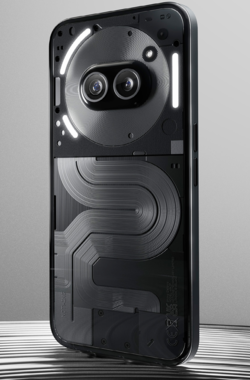
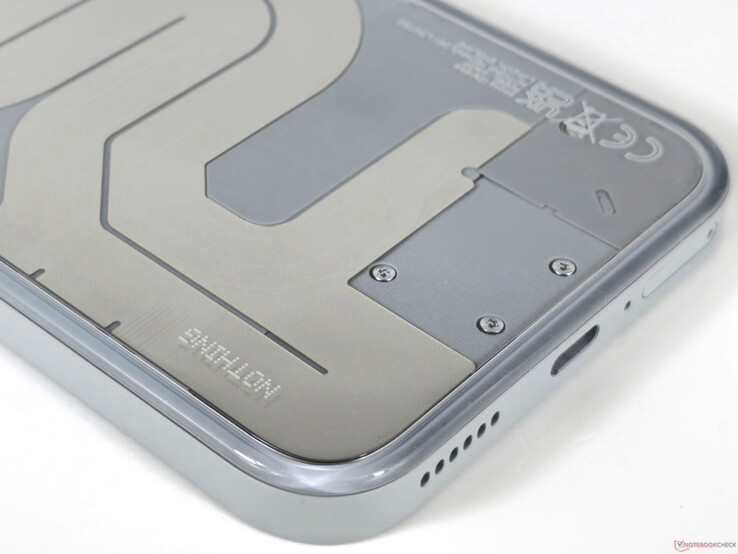









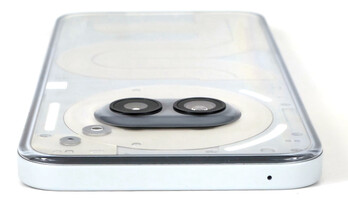
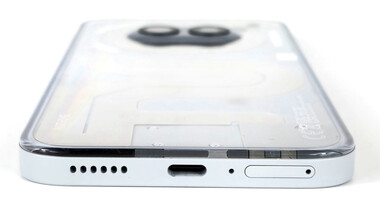

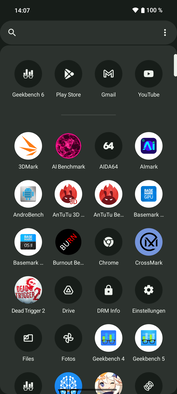
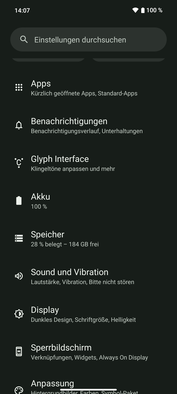
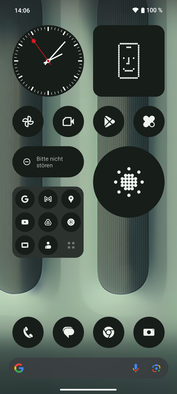
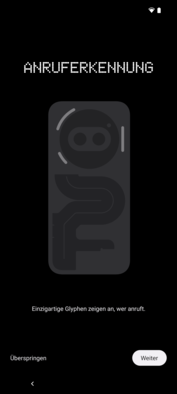
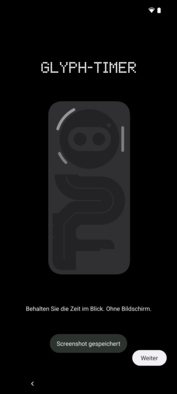
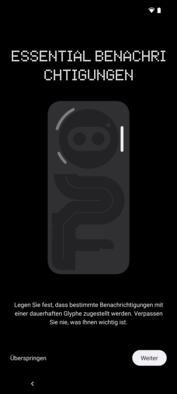

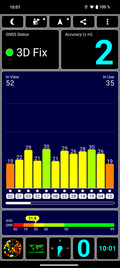
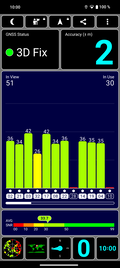

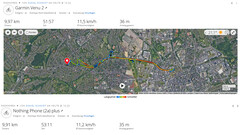
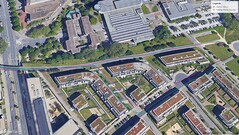
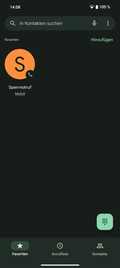
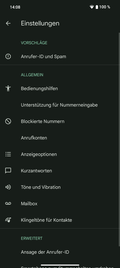






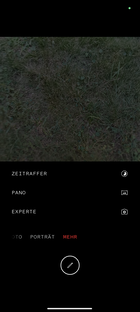
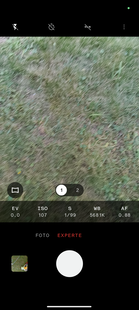
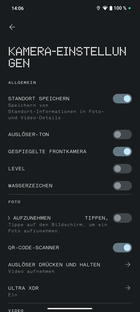
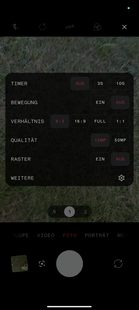
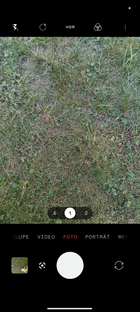

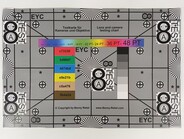

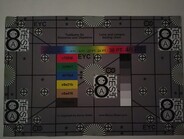

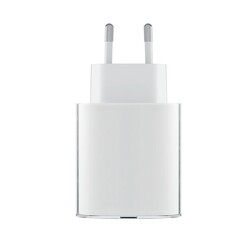
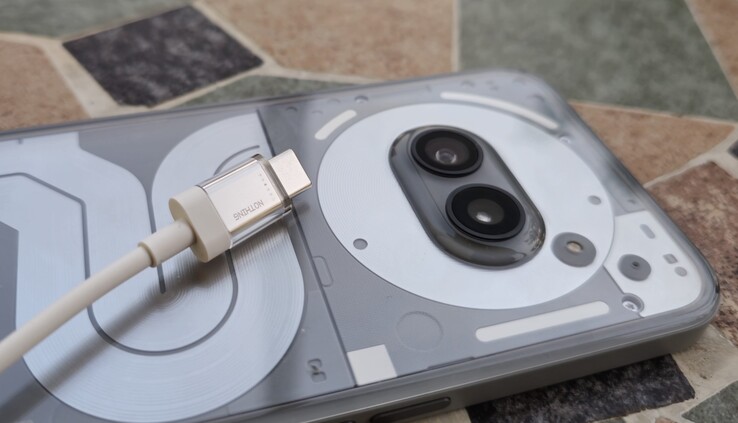
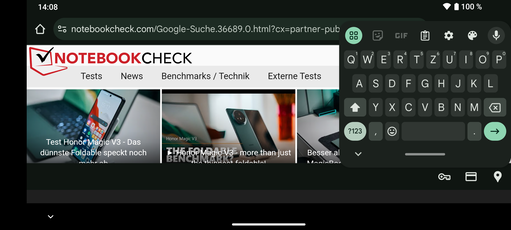


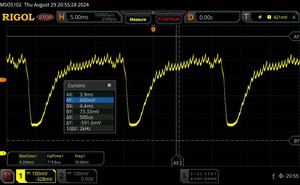





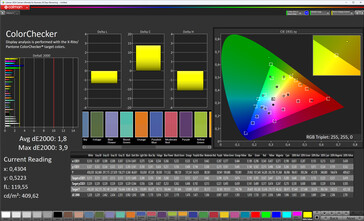

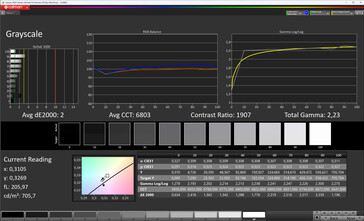
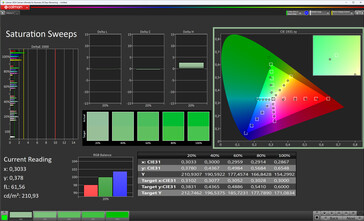
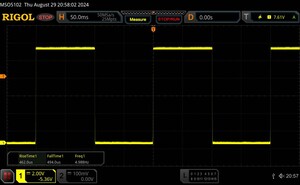
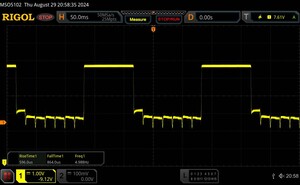






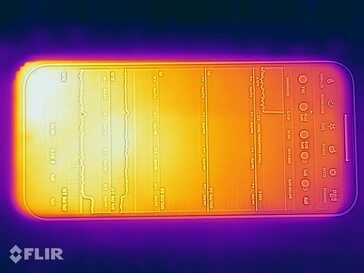
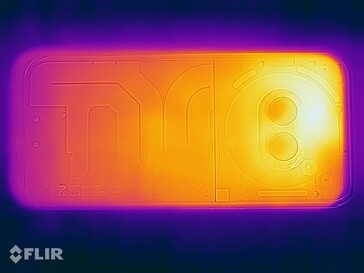
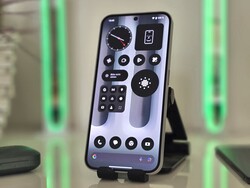
 Total Sustainability Score:
Total Sustainability Score: 


